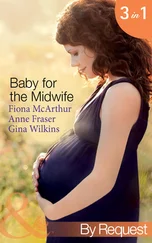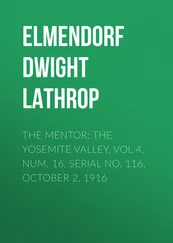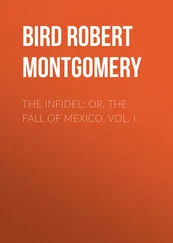Anne Blunt - A Pilgrimage to Nejd, the Cradle of the Arab Race. Vol. 2 [of 2]
Здесь есть возможность читать онлайн «Anne Blunt - A Pilgrimage to Nejd, the Cradle of the Arab Race. Vol. 2 [of 2]» — ознакомительный отрывок электронной книги совершенно бесплатно, а после прочтения отрывка купить полную версию. В некоторых случаях можно слушать аудио, скачать через торрент в формате fb2 и присутствует краткое содержание. ISBN: , Жанр: foreign_antique, foreign_prose, Путешествия и география, на английском языке. Описание произведения, (предисловие) а так же отзывы посетителей доступны на портале библиотеки ЛибКат.
- Название:A Pilgrimage to Nejd, the Cradle of the Arab Race. Vol. 2 [of 2]
- Автор:
- Жанр:
- Год:неизвестен
- ISBN:http://www.gutenberg.org/ebooks/42217
- Рейтинг книги:4 / 5. Голосов: 1
-
Избранное:Добавить в избранное
- Отзывы:
-
Ваша оценка:
- 80
- 1
- 2
- 3
- 4
- 5
A Pilgrimage to Nejd, the Cradle of the Arab Race. Vol. 2 [of 2]: краткое содержание, описание и аннотация
Предлагаем к чтению аннотацию, описание, краткое содержание или предисловие (зависит от того, что написал сам автор книги «A Pilgrimage to Nejd, the Cradle of the Arab Race. Vol. 2 [of 2]»). Если вы не нашли необходимую информацию о книге — напишите в комментариях, мы постараемся отыскать её.
A Pilgrimage to Nejd, the Cradle of the Arab Race. Vol. 2 [of 2] — читать онлайн ознакомительный отрывок
Ниже представлен текст книги, разбитый по страницам. Система сохранения места последней прочитанной страницы, позволяет с удобством читать онлайн бесплатно книгу «A Pilgrimage to Nejd, the Cradle of the Arab Race. Vol. 2 [of 2]», без необходимости каждый раз заново искать на чём Вы остановились. Поставьте закладку, и сможете в любой момент перейти на страницу, на которой закончили чтение.
Интервал:
Закладка:
We are encamped to-night once more in the Nefûd, amongst the same herbage, and at the edge of one of the same kind of fuljes, we were accustomed to on our way from Jôf. This Nefûd however, is intermittent, as there are intervening tracts of bare ground, between the ridges of sand which here very distinctly run east and west. The sand is not more than eighty feet deep, and the fuljes are insignificant compared with what we saw further west.
February 11. – Some boys with camels joined us last night, Bedouins from the Abde tribe of Shammar, on their way to meet the Haj, as they have been ordered up by Ibn Rashid. They have given us some information about the road. Ibn Duala is five days’ journey on; but we shall find the Dafir, with their Sheykh, Ibn Sueyti, on the second day. Ibn Sueyti, they say, has a kind of uttfa like Ibn Shaalan’s, but it is pitched like a tent when a battle is to be fought. The Ajman, near Queyt, have a real uttfa with ostrich feathers and a girl to sing during the fighting. 6 6 Compare Mr. Palgrave’s account.
They also narrated the following remarkable tale.
There is, they say, in the desert, five days’ march from here to the eastwards, and ten days from Suk es Shiôkh on the Euphrates, a kubr or tomb, the resting-place of a prophet named Er Refay. It is called Tellateyn el Kharab (the two hills of the ruins), and near it is a birkeh or tank always full of water. The tomb has a door which stands open, but round it there sleeps all day and all night a huge snake, whose mouth and tail nearly meet, leaving but just room for anyone to pass in. This it prevents unless the person presenting himself for entrance is a dervish, and many dervishes go there to pray. Inside there is a well, and those who enter are provided (“min Allah”) for three days with food, three times a day, but on the fourth they must go. A lion is chained up by the neck inside the kubr.
The birkeh outside is always full of water, but its shores are inhabited by snakes, who spit poison into the pool so that nothing can drink there. But at evening comes the ariel (a fabulous antelope), who strikes the water with his horns, and by so doing makes it sweet. Then all the beasts and birds of the desert follow him, and drink. The Sheykh of the Montefyk is bound to send camels and guides with all dervishes who come to him at Suk-es-Shiôkh to make the pilgrimage to Refay. The boys did not say that they had themselves seen the place.
We are not on the high road now, having left it some miles to the right, and our march to-day has been mostly through Nefûd. The same swarms of locusts everywhere, and the same attendant flocks of birds, especially of fine black buzzards, one of which Abdallah was very anxious to secure if possible, as he says the wing bones are like ivory, and are used for inlaying the stocks of guns and stems of pipes. But he had no success, though he fired several times. Wilfrid was more fortunate, however, in getting what we value more, a bustard, and the very best bird we ever ate. Though they are common enough here, it is seldom that they come within shot, but this one was frightened by the hawk, and came right overhead.
About noon, we came to a solitary building, standing in the middle of the Nefûd, called Kasr Torba. It is square, with walls twenty feet high, and has a tower at each corner. It is garrisoned by four men, soldiers of Ibn Rashid’s, who surlily refused us admittance, and threatened to fire on us if we drew water from the well outside. For a moment we thought of storming the place, which I believe we could have done without much difficulty, as the door was very rotten and we were all very angry and thirsty, but second thoughts are generally accepted as best in Arabia, and on consideration, we pocketed the affront and went on.
Soon afterwards, we overtook a young man and his mother, travelling with three delúls in our direction. They were on the look-out, they said, for their own people, who were somewhere in the Nefûd, they didn’t quite know where. There are no tracks anywhere, however, and they have stopped for the night with us. Very nice people, the young fellow attentive and kind to his mother, making her a shelter under a bush with the camel saddles. They are Shammar, and have been on business to Haïl.
February 12. – Our disappointment about water yesterday, has forced us back on to the Haj road and the wells of Khuddra, thirteen or fourteen miles east of last night’s camp. We had, however, some sport on our way. First, a hare was started and the falcon flown. The Nefûd is so covered with bushes, that without the assistance of the bird the dogs could have had no chance, for it was only by watching the hawk’s flight that they were able to keep on the hare’s track. It was a pretty sight, the bird above doubling as the hare doubled, and the three dogs below following with their noses in the air. We made the best of our way after them, but the sand being very deep they were soon out of sight. Suddenly we came to the edge of the Nefûd, and there, a few hundred yards from the foot of the last sand-bank, we saw the falcon and the greyhounds all sitting in a circle on the ground, watching a large hole into which the hare had just bolted. The four pursuers looked so puzzled and foolish, that in spite of the annoyance of losing the game, we could not help laughing. Hares in the desert always go to ground. Mohammed and Abdallah and Awwad were keen for digging out this one, and they all worked away like navvies for more than half an hour, till they were up to their shoulders in the sandy earth (here firm ground), but it was in vain, the hole was big enough for a hyæna, and reached down into the rock below. Further on, however, we had better luck, and having run another hare to ground, pulled out not only it, but a little silver grey fox, where they were both crouched together. I do not think the hares ever dig holes, but they make use of any they can find when pressed. We also coursed some gazelles.
There are fourteen wells at Khuddra, mere holes in the ground, without parapet or anything to mark their position, and as we drew near, we were rather alarmed at finding them occupied by a large party of Bedouins. It looked like a ghazú, for there were as many men as camels, thirty or forty of them with spears; and the camels wore shedads instead of pack saddles. They did not, however, molest us, though their looks were far from agreeable. They told us they were Dafir waiting like the rest for the Haj; that their Sheykh, Ibn Sueyti, was still two days’ march to the eastwards, beyond Lina, which is another group of wells something like these; and they added, that they had heard of us and of our presents to the Emir, the rifle which fired twelve shots, and the rest. It is extraordinary how news travels in the desert. I noticed that Mohammed when questioned by them, said that he was from Mosul, and he explained afterwards that the Tudmur people had an old standing blood feud with the Dafir in consequence of some ghazú made long before his time, in which twenty of the latter were killed. 7 7 Compare Fatalla’s account of the war between the Mesenneh and the Dafir near Tudmor at the beginning of the present century.
This has decided us not to pay Ibn Sueyti the visit we had intended. It appears that there has been a battle lately between the Dafir and the Amarrat (Ánazeh), in which a member of the Ibn Haddal family was killed. This proves that the Ánazeh ghazús sometimes come as far south as the Nefûd. These wells are seventy feet deep, and the water when first drawn smells of rotten eggs; but the smell goes off on exposure to the air.
The zodiacal light is very bright this evening; it is brightest about two hours after sunset, but though I have often looked out for it, I have never seen it in the morning before sunrise. It is a very remarkable and beautiful phenomenon, seen only, I believe, in Arabia. It is a cone of light extending from the horizon half-way to the zenith, and is rather brighter than the Milky Way.
Читать дальшеИнтервал:
Закладка:
Похожие книги на «A Pilgrimage to Nejd, the Cradle of the Arab Race. Vol. 2 [of 2]»
Представляем Вашему вниманию похожие книги на «A Pilgrimage to Nejd, the Cradle of the Arab Race. Vol. 2 [of 2]» списком для выбора. Мы отобрали схожую по названию и смыслу литературу в надежде предоставить читателям больше вариантов отыскать новые, интересные, ещё непрочитанные произведения.
Обсуждение, отзывы о книге «A Pilgrimage to Nejd, the Cradle of the Arab Race. Vol. 2 [of 2]» и просто собственные мнения читателей. Оставьте ваши комментарии, напишите, что Вы думаете о произведении, его смысле или главных героях. Укажите что конкретно понравилось, а что нет, и почему Вы так считаете.
![Anne Blunt A Pilgrimage to Nejd, the Cradle of the Arab Race. Vol. 2 [of 2] обложка книги](/books/750183/anne-blunt-a-pilgrimage-to-nejd-the-cradle-of-the-cover.webp)











